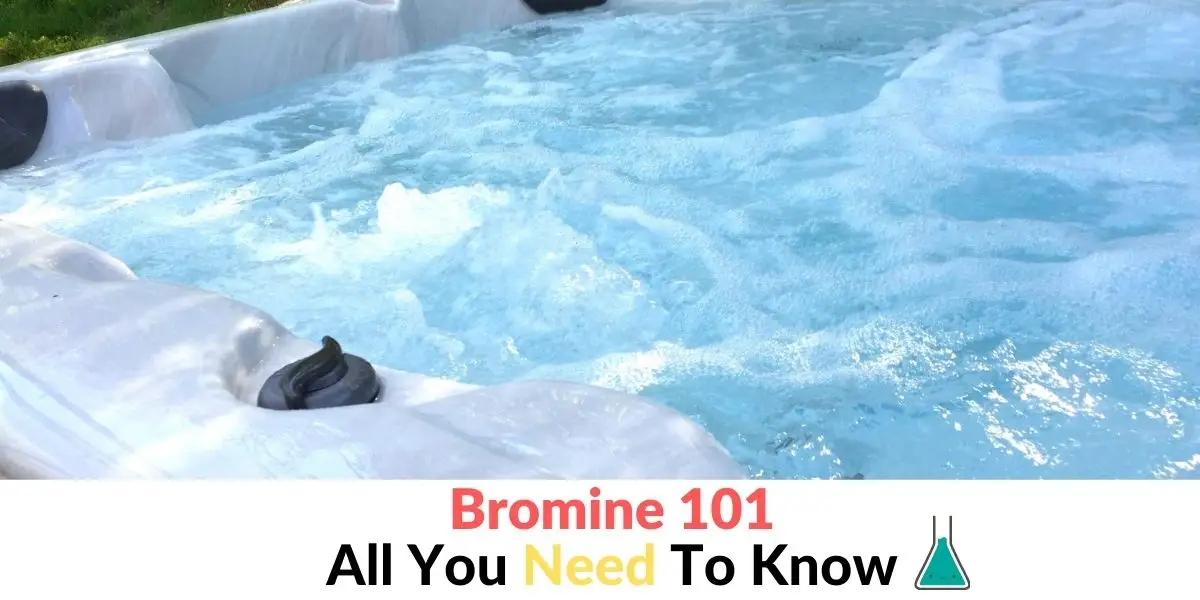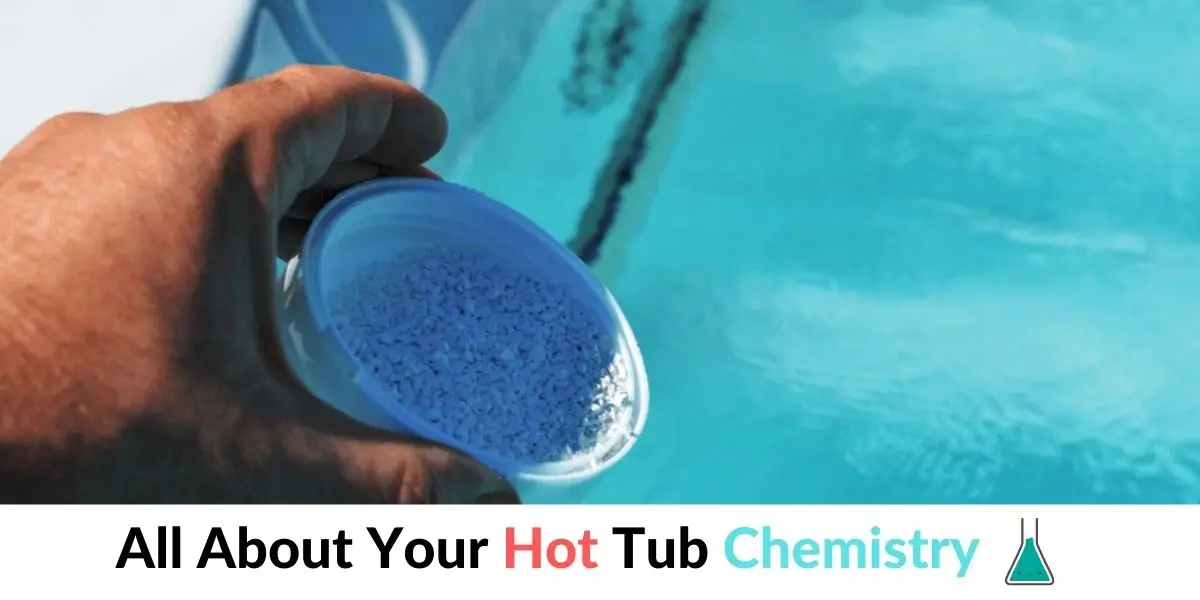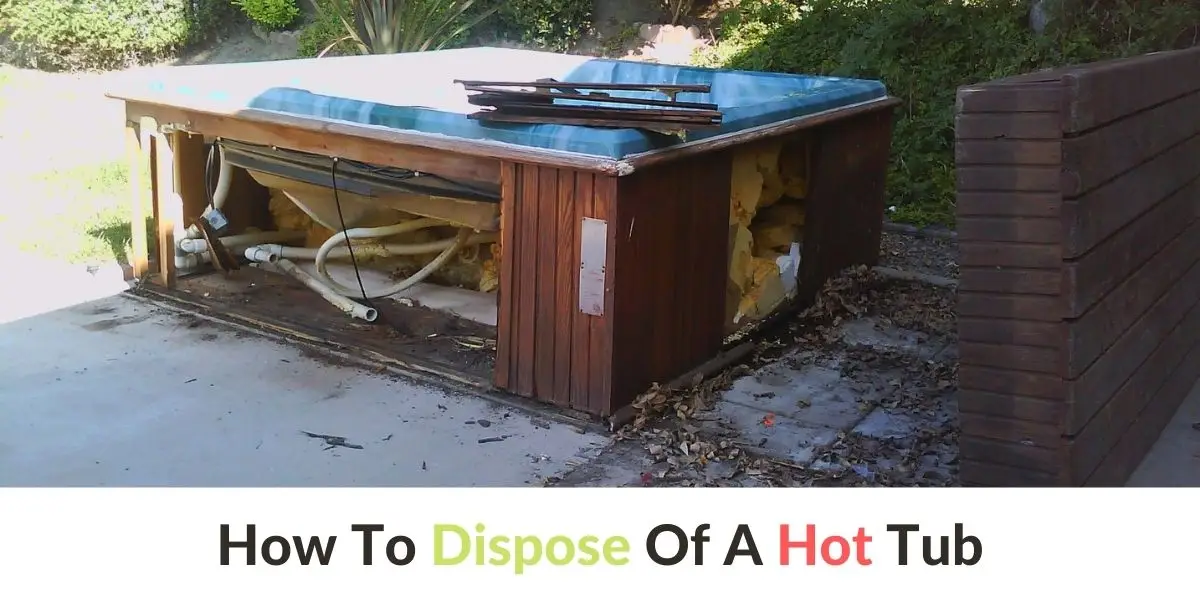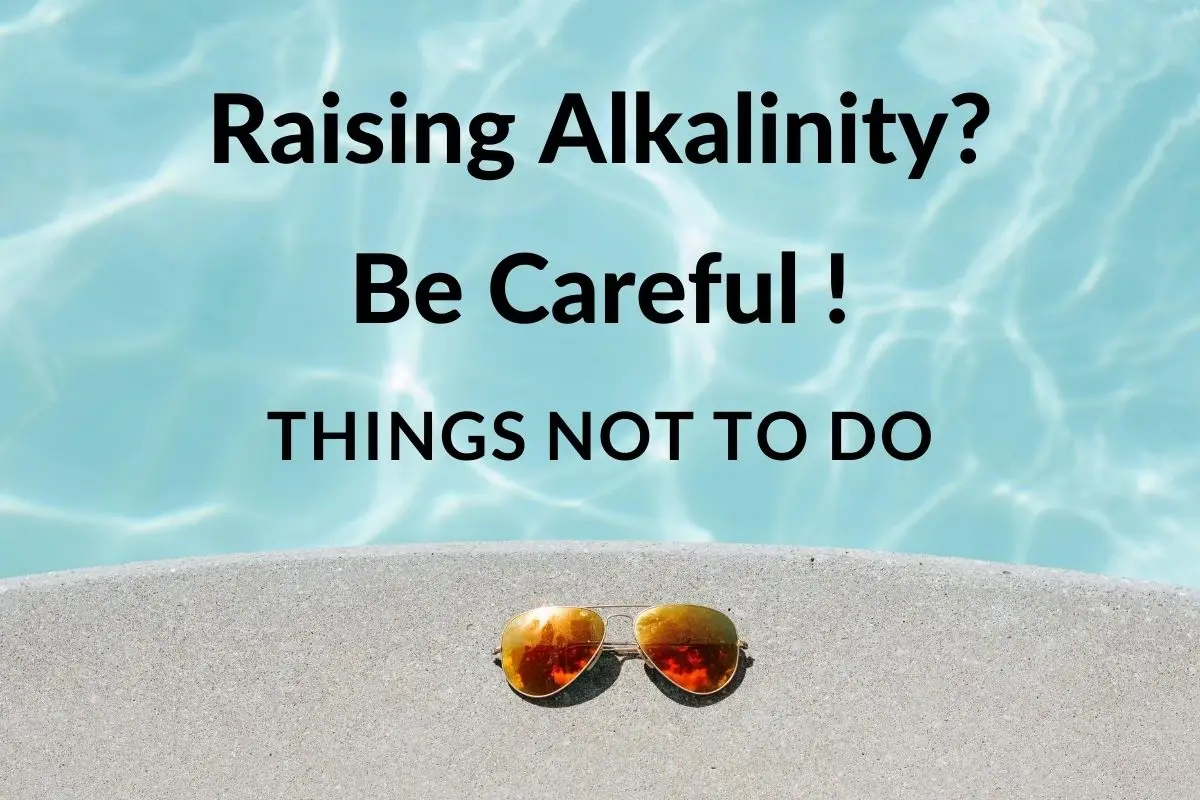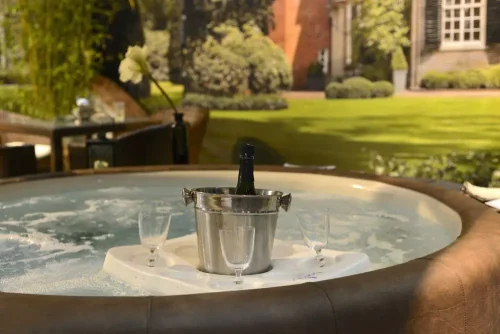How To Lower Hot Tub Hardness For More Pleasure Naturally?
Hot tub water (calcium) hardness is probably the most important measurement to keep an eye on when you are balancing your water’s chemicals. Lowering the calcium hardness is somewhat more complicated than increasing the water hardness. So, how to lower water hardness in hot tub without affecting other properties?
Use this in order to lower water hardness in your hot tub:
- A partial exchange of the water
- Use clear water source
- Use water softener
- Use the rainwater
- The use of flocculants
How do I Adjust the Hardness in my Hot Tub?
Low Calcium Hardness
If the water in your spa is a little too soft, it’s not too difficult to adjust it with a calcium hardness improver.
- Boost Water Quality: Prevent cloudy, dull water by restoring the right calcium levels in your pool
- Protect Your Pool: Helps stop costly damage like corrosion and pitting on pool surfaces and equipment
- Easy-to-Use Granules: Fast-dissolving formula works quickly—just measure, pour, and circulate
- Dial in the Perfect Balance: Raise hardness 50 ppm per 6 lbs per 10,000 gallons—easy, accurate, and powerful
- Multi-Use Chemical: Highly effective for swimming pools—and also serves as an industrial-grade ice and snow melt
It’s as simple as adding a little calcium to the water. But don’t drive yourself crazy.
Read the instructions to find out how much to add for your particular spa, and start with the lowest recommended amount.
Remember, it’s easier to increase calcium than to decrease it.
High Calcium Hardness
In addition to all the inconvenience high calcium hardness can cause, it prevents your other chemicals from properly distributing in the water and doing their job.
But it’s not as easy to adjust as low levels.
If you’ve done everything you can to balance all your other chemical levels and still can’t get the calcium hardness down, you’ll most likely need to drain your water and start over.
There are chemicals you can use to reduce the levels, but I don’t like adding other chemicals unless absolutely necessary. In case you do want to do that because you don’t have time for anything else, I can suggest the product below.
- Helps prevent chalky build-up on spa surfaces and equipment
- Add 2 ounces of this product directly to the spa for each 500 gallons
- Apply treatment at least once per week
How do I Lower the PPM in my Hot Tub?
You can lower your TA (PPM) using sodium bisulfate. If you need to lower the total alkalinity in a hot tub with 1,000 gallons of water, use:
- 0.21 lbs. to lower the TA 10 ppm,
- 0.43 lbs. to lower the TA 20 ppm,
- 0.64 lbs. to lower the TA 30 ppm
- 1.06 lbs. to lower the TA 50 ppm.
Sprinkle the powder in the hot tub around the edges.
How to Lower Alkalinity in Hot Tub Naturally?
To reduce high alkalinity, use the pH Reducer. As a rule of thumb, one capful of pH reducer will lower the alkalinity value by about 1 square on the test strip. The pH reducer should be added gradually to avoid adding too many chemicals and having too low a reading.
Since the pH reducer lowers both alkalinity and pH, you will need to test your pH the day after the alkalinity adjustment to see if you need to raise your pH to the acceptable range. Always bring your alkalinity level back to the acceptable range before adjusting the pH.
If your water still has a green tint after adjusting the alkalinity, check to see if the sanitizer level is still there (add 30 grams, 1 capful of Sun-Boom if necessary).
If the sanitizer level is good, add 100 grams (4 capfuls) of Spa Shock to make the water clear again.
Each time you add chemicals to your spa water, you will need to turn on one of your jet pumps to circulate the water for 20 minutes.
Leave the spa cover open after adding chemicals to allow the water to breathe and release any chemical odors into the air to protect the cover and ensure no chemical odors build up under the cover.
Monitoring water alkalinity is an important part of balancing the water in your spa, helping to keep your water clean and clear longer and increasing the effectiveness of your spa’s sanitizer.
How do you Lower Calcium Hardness in a Hot Tub?
So how do you really lower water hardness? Let me expand on the main bullet points here.
- A partial exchange of the water is the best option. Make sure that your filling water is softer.
- In the long run, you should pay attention to the right water source. You can read the calcium concentration of the water in your environment from various maps of water companies. If the calcium content is too high, look for a source of water with a maximum calcium hardness of 400 ppm.
- There is no chemical to lower the calcium hardness, but water softeners can reduce the effects of having high calcium. A water softener is a chemical that combines with calcium to make it virtually harmless. The likelihood and intensity of water turbidity and corrosion problems decreases.
- Use the rainwater, because it contains little calcium. If you don’t pull the hot tub cover onto the tub, the water level will rise by several centimeters if it rains properly. Use the rainwater to lower the calcium concentration. The best way to get rid of the dirt that the rain washes into the tub is by chlorinating it with a shock.
- The use of flocculants is another option. If you add such an agent, the excess calcium will clump together. The (small) lumps accumulate at the bottom of the tub. From there you can suck them off. The filter also collects the particles. Then clean the tub filter.
Did You Know There Is More To Know About Hot Tub Water Chemistry ?
I have researched and written an epic article on the topic of hot tub water chemistry that you can use as a guide. I am sure it will answer your questions. You can check the article now if you click here.
What Is Calcium Hardness (Hard Water In Hot Tub)?
For hot tub owners, this term is very important and an elementary part of the tub maintenance. Knowing this can help you avoid expensive mistakes during hot tub maintenance.
Maintaining the correct calcium hardness in the hot tub is essential to reducing the likelihood of corrosion, limescale, and cloudy water. There is a long list of consequences of unbalanced calcium content in the water.
However, depending on where you live, your water calcium levels may vary a lot. That means that you have to test your water regularly to make sure that the calcium is in the right range. If you don’t, your hard water in hot tub could be damaging your hot tub.
Calcium hardness describes the concentration of calcium ions in water. If you add the calcium hardness and the magnesium hardness you get the total water hardness. The ideal range for calcium hardness is 150 to 400 ppm.
Water with a higher calcium hardness is called hard water. Water with a lower calcium hardness is called soft water. Hot tub water that is too hard or too soft can cause problems in both ways.
The concentration of calcium ions in the water is primarily dependent on the filling water. While rainwater is predominantly soft, hard water in hot tub occurs mainly in regions with a lot of sand and limestone. Over time, the calcium hardness of the hot tub increases due to the evaporation of the water.
How Often Should The Calcium Hardness Be Tested?
Calcium hardness needs to be tested less often than pH or alkalinity. It is common practice to perform a calcium hardness test every two weeks. Rather, check the water sources from which you take the filling water for the hot tub. That might be your source of problems. Then you have a few clues with which you can roughly estimate the calcium hardness.
You can measure the calcium hardness with special test strips or hot tub testers.
Some test strips measure the total water hardness, which approximately corresponds to the sum of calcium and magnesium hardness. However, you cannot estimate the calcium hardness from the value of the total water hardness.
To us, it doesn’t really matter because we want both of those to be lowered.
What Happens If The Water Is Too Hard?
If the hot tub water hardness is too high, the tub water becomes cloudy. The problem is that even hot tub shockers no longer get the turbidity out of the water – no matter how much of it they use.
Having hard water in hot tub means having to deal with large calcium deposits on the walls and filtration system of your hot tub.
What Happens If The Water Is Too Soft?
If the calcium hardness is less than 150 ppm, the water can become corrosive. This means that soft water will attack the tub and metal. Mortar, concrete and joints are corroded, metal rust on hot tub accessories and metal compounds in vinyl tubs will be destroyed. Stains on the walls and hot tub floor are also possible.
In a tub, this can lead to all sorts of damage, resulting in expensive repairs. Furthermore, you shouldn’t be using the hot tub until the calcium hardness has been reduced to a normal level.
How To Balance The Calcium Hardness?
An incorrectly adjusted calcium hardness can lead to major problems. Consequently, it is important to balance the concentration correctly.
Prepare the adjustment by performing the following steps:
- Clean the hot tub and remove impurities.
- Adjust the pH and alkalinity before you attack the calcium hardness because the other chemicals affect the calcium hardness.
- Test the hot tub water for the concentration of calcium ions.
- If the calcium hardness is above 400 ppm, you need to lower the degree. If the value is below 150 ppm, you must increase it. It is best to target a concentration of 275 ppm to be exactly in the middle of the optimal range.
- Increase calcium hardness
Increasing the water hardness is much easier than decreasing the value. You can increase the hardness level by adding Calcium Hardness Increaser. Follow the manufacturer’s instructions when adding the agent to adjust the concentration correctly.
Bottom Line
Maintaining normal water hardness can be a difficult task. It is undoubtedly one of the chore tasks of a tub owner. It gets particularly annoying when the water from the main source is too soft or too hard. In this case, your actions are in constant demand.
If you live in a region with water that is too hard or if you obtain your filling water from sources with high calcium content, you should make the use of water softeners part of your regular maintenance plan.
All this is not difficult. With a little time and patience, you can bring the calcium content of your hot tub back to an acceptable level and bath carefree without having to struggle with the problems.
Related Questions
How To Lower pH In Hot Tub Naturally?
Spas require some maintenance and one of the most important routine tasks of an owner is to keep the water in balance and the plumbing in good condition. If the water in a spa becomes unbalanced or overly alkaline, water conditions deteriorate rapidly. When the water becomes too alkaline, the pH rises and you need an acidic chemical that can lower both pH and alkalinity.
To learn more about maintaining the proper water balance in your spa and how to lower the pH, read the following.
Selecting the Proper Chemicals
To lower the pH and alkalinity of your thermal water, it is necessary to add acid. The most common choices are liquid hydrochloric acid or dry sodium bisulfate. When acid is added to water, it increases the concentration of hydrogen and lowers the pH. The acid also reacts with bicarbonate in water, reducing alkalinity.
Check Your Measurements
If you are trying to balance your water, you should not forget that the pH value decreases faster than the alkalinity. So, if you start by correcting the alkalinity, the pH will slowly adjust. Although each brand or type of chemical is different, you will generally need approximately 1.23 liters of hydrochloric acid for every 10,000 gallons of spa water. This will lower the total alkalinity by 10 ppm.
Mixing the Chemicals
If you follow the instructions on the label, you must mix the chemicals and a small amount of water. Pour about 8 gallons of water from your spa into a plastic bucket, then pour the pH decreaser into the water in the bucket and let it dissolve. It is very important to note that the water should be poured into the bucket first, and only then the acid should be poured into the water, as adding the acid may damage the bucket first and not mix properly with the water.
Adding to Hot Tub
Make sure your spa is turned on and running. It should also be obvious that there is no one in your hot tub when you add the chemicals. Pour the chemical mixture into the bucket, adding it gradually with a controlled motion. If the acid is poured too quickly, it can damage the walls or bottom of the spa.
Let Balance
Let the pump circulate the water for 3 to 6 hours after adding the pH decreaser. The hot tub pump will thoroughly mix all spa water with the acid so that both pH and alkalinity are consistent. After some time, check the alkalinity of the water and then the pH. If the chemical application was successful, the alkalinity should already be balanced, but adjusting the pH may take a little longer. However, if the alkalinity is still too high, repeat the process until both are balanced.







